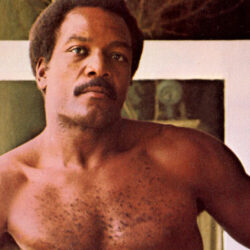One of the most frequent sexual issues I see in my practice is the problem of discordant desire in long-term relationships. This usually means that one person wants to have more sex, or feel more desired, than the other partner in the relationship. This leads to a cycle of frustration and rejection for both partners.
The partner who wants it less (or shows less desire) gets frustrated that they have to say “no” more often, and the partner who wants it more wallows in feelings of rejection from lack of initiation or responsiveness to their higher need for sex and intimacy. It doesn’t matter how much more one partner wants to feel, or be, more sexually intimate with their person – this pattern of wanting more, or less, is so typical that there are multiple books dedicated to understanding it better.
To be clear, it’s not really about frequency –even if there is some scorekeeping involved. When a couple comes into my office wanting to talk about their divergent desires, it’s not beneficial to talk about how much.
What’s more beneficial is to talk about “how come?” How come one partner isn’t seeking out connection and caresses in a way that works for the other partner? How come the rejection is landing in such a way that it’s creating distance and discord? I want to understand why the sex they are having isn’t working for both of them.
Sometimes it’s as simple as boredom, to which the antidote is active novelty and curiosity. I say active novelty, because it requires thought, preparation and action to navigate stagnancy.
I also lean on curiosity because it’s how we show up when we are first dating our partners, and it’s how we build adoration for them. If we can get curious again, we can learn more about our partner and associate positive feelings with these discoveries. Even if we don’t learn something about our partners (highly unlikely, especially since we don’t know what we don’t know), we can create a new response to old patterns, which creates its own experience of novelty.
Other times, the discord is due to physiological and psychological factors. Some people just don’t want, or need, as much physical touch as others for many reasons (e.g. hormonal, history of abuse/neglect, etc.). Some lower desire partners could be avoiding sex because it’s painful. Couples may also need to mourn the sex life they once had, or wanted, due to menopause, erectile issues, or other causes. In these cases, I would also recommend a doctor’s visit to better understand what’s going on with their body and to check that their hormones are in balance.
Sometimes it’s a matter of skill, and it’s about learning and teaching each other how to get aroused. In these instances, couples need acquire skills on how to communicate their yucks and yums, while learning how to be authentic and willing to talk about these things.
Regardless of the root cause, desire discrepancy is a thing that can be worked on (and worked out) with time, patience, guidance and the willingness to talk openly and honestly with your partner. It’s not a perfect science, and no one person will get everything they want in navigating the differences, but you can definitely get more of what you need.







